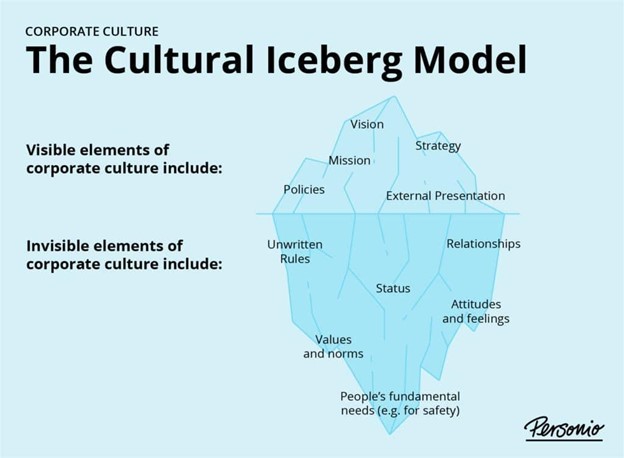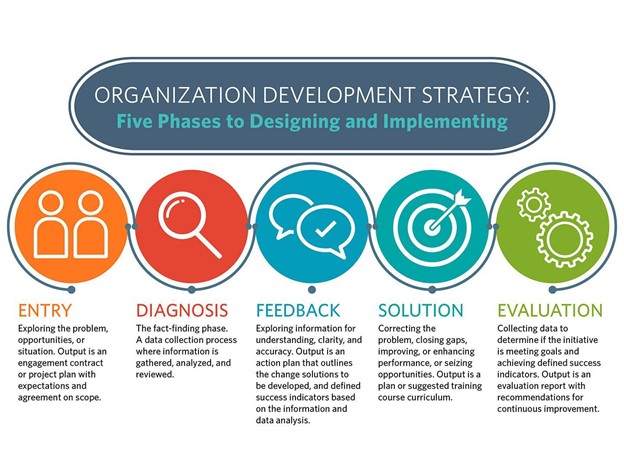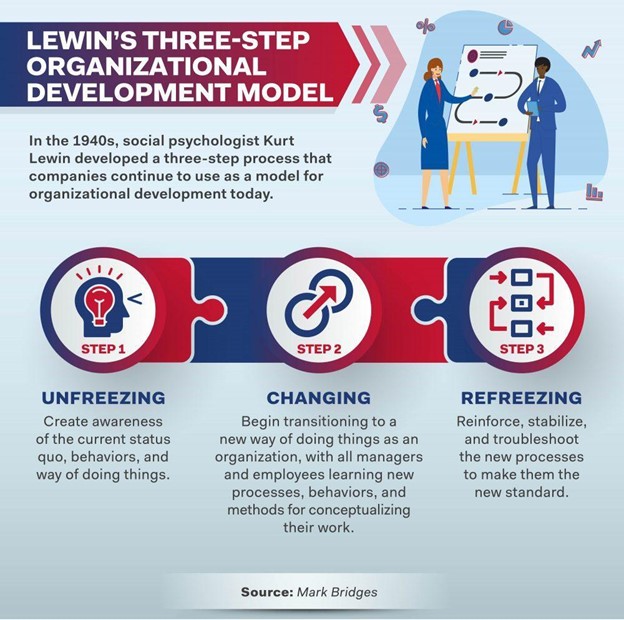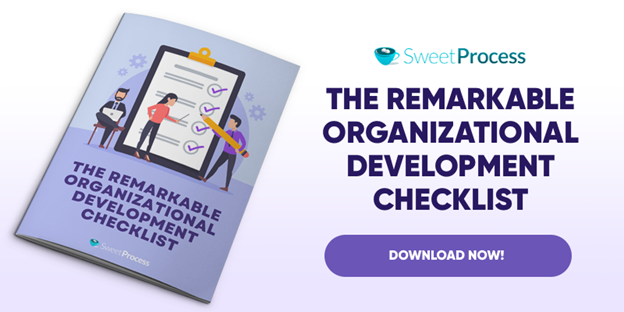Last Updated on February 14, 2025 by Owen McGab Enaohwo
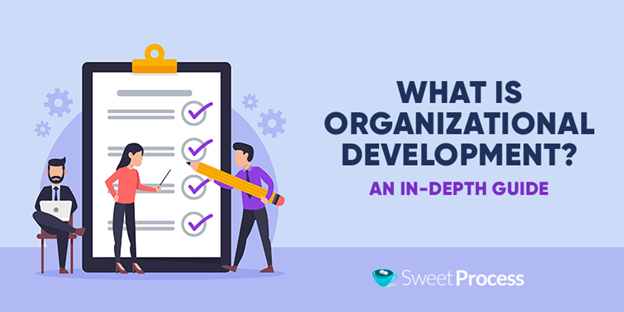
Do your employees get distracted or lose interest in their work and leave the organization? Is leadership ignoring employee feedback?
Many of the problems organizations are facing have everything to do with either people, strategies, or ineffective systems—or all three.
The most exhausting of all is people-related problems. As a leader, you end up spending precious time uncovering, addressing, and resolving serious problems or situations that people (you employed) created.
Your job would be easier if everyone in the organization functioned at peak efficiency, but do you even know how to get there?
The best solution is to adopt organizational development (OD) initiatives, which effectively facilitate organizational changes through humanistic and holistic approaches that place employees at the heart of processes.
That’s what Google is doing to improve its organizational development initiatives. They cultivated a culture of ongoing learning where employees sign up to learn new things and grow professionally, mitigating serious problems that may arise.
Here’s everything you need to know about OD.
Chapter 1: What is Organizational Development?
Chapter 2: Benefits of Organizational Development
Chapter 3: Organizational Development Process
Chapter 4: Examples of OD Interventions
Chapter 5: Challenges of Organizational Development
Chapter 6: What to Know About an OD Practitioner
Chapter 7: Organizational Development Models
Chapter 8: Organizational Development and Human Resource
Chapter 9: How SweetProcess Can Help You with Organizational Development
Chapter 1: What is Organizational Development?

Richard Beckhard, a well-known American organizational theorist and an early leader in the field of organizational development (OD), defined OD this way:
“Organizational development is an effort planned, organization-wide, and managed from the top, to increase organizational effectiveness and health through planned interventions in the organization’s ‘processes,’ using behavioral-science knowledge.”
Let’s put it simply…
Organizational development is a process that increases efficiency in a company. The use of interventions (or techniques —based on social and behavioral science—simplifies organizational change.
Whatever the definition you choose, the core purpose of OD is change.
But, as you may know, large-scale organizational change is rarely simple—and is rarely met without employee skepticism and resistance.
That’s why OD practitioners are constantly developing more effective techniques (or interventions) so that changes can take place in organizations without a hitch.
Organizations need to continually update and respond to change because investors want results, technological inventions are being rapidly developed, and customers are demanding more changes.
So, for companies to effectively improve their processes, organizational (and economic) structures, technologies, and strategies, they must embrace change.
Organizational Development Goals
Organizational changes can be difficult for your employees to handle, especially in the face of certain barriers and challenges. But when you take time to prepare your employees for the inevitable, you can successfully overcome resistance.
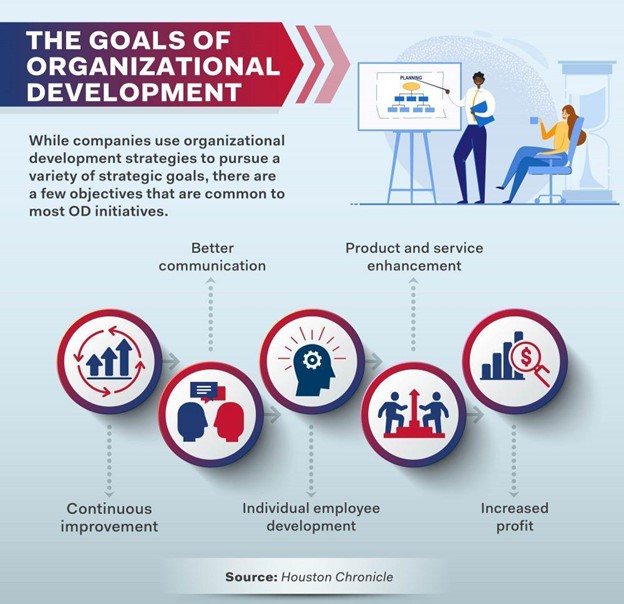
Here are several goals to keep in mind when adapting to change.
Encourage Employees to Become Open to Change
Not every employee will embrace organizational changes right away. To overcome resistance, introduce changes gradually as you go. This allows for ongoing improvement and, with time, encourages the employee to embrace changes and new ideas.
Introducing gradual changes in your organization will require a systematic process that involves planning, implementation, evaluation, improvement, and monitoring.
Interact More With Your Employees
It’s easier to implement changes when you have clear and open lines of communication with everyone in the organization. Employees feel that they have more ownership in the company’s mission when you interact with them consistently.
So, increase communications and encourage them to give you feedback. They’ll feel more motivated to accept organizational changes.
Describe How Changes Lead to Innovations
To motivate your employees to accept organizational changes, illustrate how the change process will improve products and services, leading to more innovations. Make sure to perform intensive market research and analysis on the effectiveness of the innovation.
Show How Profits Will Increase
Employees are likely to overcome resistance to change when you point out (in detail) how the changes will boost productivity and the company’s bottom line. Operational organizational development increases profits and improves business processes.
Organizational Development’s History
Here are some key people in history who influenced most organizational development concepts, which are still commonly used to date.
Kurt Lewin (1898–1947)
A German-American psychologist and the founding father of organizational development, Lewin founded the Research Center for Group Dynamics at the prestigious Massachusetts Institute of Technology (MIT) in 1945.
Lewin tested the effectiveness of collaborative change processes and is hailed as the pioneer and brainchild of the first concepts of action research and group dynamics, which strengthen organizational development initiatives.
Through his many experiments, he discovered participative methods in small groups positively impacted changes in attitude and people’s commitment to an organization.
Imitations of his experiments (or parallel interests of what happens in individual focus groups at work) proliferated across the UK and Europe, giving rise to The Tavistock Institute and Roffey Park (both founded in the late 1940s).
Abraham Harold Maslow (1908–1970)
An American psychologist and philosopher best known for his “hierarchy of needs” concept, Maslow played a role in the history of organizational development.
Maslow argued that we all have a hierarchy of needs—ranging from self-actualization and esteem to basic psychological requirements and love—and they must be satisfied.
The “self-actualization” need was more likely to be met if an individual’s contributions in an organization were recognized and if the organization was more open (to change).
Unlike Maslow, other organizational theorists encouraged participation to achieve greater performance in an organization and motivate employees.
They also advocated for democratic leadership styles, arguing it enhanced organizational performance and employee satisfaction.
Warren Bennis (1925–2014)
An American scholar, organizational consultant, and author, Bennis introduced the concept of “organizational culture” in 1969. This concept briefly described organizational development as such:
“[OD is] a complex educational strategy intended to change beliefs, attitudes, values, and structures of organizations so that they can better adapt to new technologies, markets, and challenges, and the dizzying rate of change itself.”
Bennis is regarded as an early leader in the modern field of leadership studies.
Edgar Henry Schein (1928—)
A former MIT professor at the Sloan School of Management, Schein is hailed for creating the concept of “organizational culture” back in the early 1980s—and he did it using the (now-famous) “cultural iceberg” and “lily pad” analogies.
Using the cultural iceberg model, Schein explains how difficult it is to uncover behaviors beneath an organization’s surface because much is hidden.
And in his lily pad analogy, Schein paints a picture of what drives most organizations’ actions and thoughts.
He explains that we can all see lilies on the water (obvious behaviors in an organization), but unless we peer down the stems (values supporting those behaviors) and deep in the roots (values and behavioral norms), we’ll never understand what drives most organizations’ actions and people’s thoughts.
Chapter 2: Benefits of Organizational Development

A good way for an organization to achieve higher productivity and more efficient processes is through dedicated organizational development. Let’s focus on some of the key benefits of OD, from increased profits to better work improvement.
Increased Profits
Organizational development has a positive impact on the bottom line. By increasing productivity and enhancing innovations, profits and efficiency grow significantly.

With proper OD interventions, you can greatly minimize employee absenteeism and turnover, reducing the costs of operation.
When you align your company’s objectives with OD, you focus on development. Customer satisfaction increases, and the quality of your products surges.
Continuous Organizational Improvement
Companies that use organizational development initiatives continually improve their offerings and business processes.
Continuous OD leverages internal and external changes and adopts a proactive approach that helps you plan, implement, evaluate, improve, and monitor strategies, creating a cycle of improvement over time.
Better Communication
Organizational development initiatives strive to improve communication, increase feedback, and enhance better interactions within an organization.
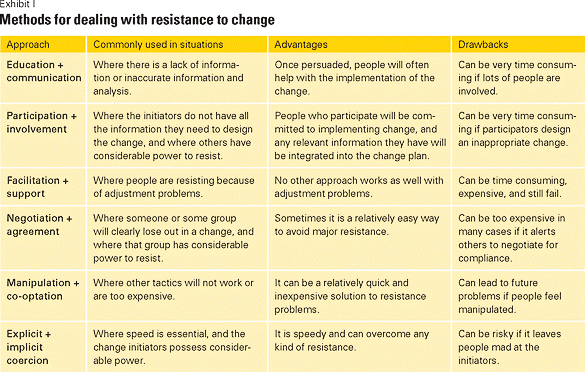
When there’s a clear and candid communication channel, employees can fully understand the company’s desired goals and values.
This leads to a better understanding of the need for organizational changes. Also, feedback gets shared across all levels of the company in order to promote continuous improvement.
Improvement of Products and Services
Another benefit of organizational development is innovation, which leads to the enhancement of your products and services.
By listening to customer expectations, doing market research, and analyzing the competition, you can increase product innovation. And when that happens, employee morale hits new levels, leading to improved business processes and procedures.
Employee Development
The need to enhance employee skills stems from the evolving market requirements, which call for constant market and industry changes.
This compels companies to develop their employees’ skills through work process improvements, competency enhancement, training, and learning programs.
Encourages Innovation
When businesses fail to adopt organizational changes, they fall behind the curve and lose ground to their competitors. Organizations should adopt changes now to keep up with technological advancements to mitigate future problems.
Ideally, organizations should quickly move and adapt to changes before change resistance shuts off creativity in people.
Promotes the Growth of Skills
An organization benefits when it nurtures new skills and specialties in its employees and talented team members. Employees who get stuck in doing repeatable manual tasks daily never get the chance to show their skills or learn anything new.
But by adopting organizational development interventions, you promote the growth of your employee’s skills and help the whole business increase efficiency and improve its processes.
Creates New Business Opportunities
Having stellar organizational development initiatives can scale your business to new areas and heights. Take Nokia, for example. As popularity for mobile phones surged, Nokia massively dominated the market.
But the Finnish company failed to keep pace with changing customers’ needs and didn’t want to adapt to the market dynamics, prompting the company to exit the market in 2014.
Years later, Nokia restructured its processes and made organizational changes, which saw the company do things differently. Now, Nokia’s new core business is networking equipment.
These new business opportunities occur when a company’s leadership embraces organizational changes or deploys newer ways of doing things.
Improves Quality of Operations
A company can identify errors in its business processes and fix them through organizational development initiatives, triggering an error-free operation that gives rise to quality products and services.
Chapter 3: Organizational Development Process
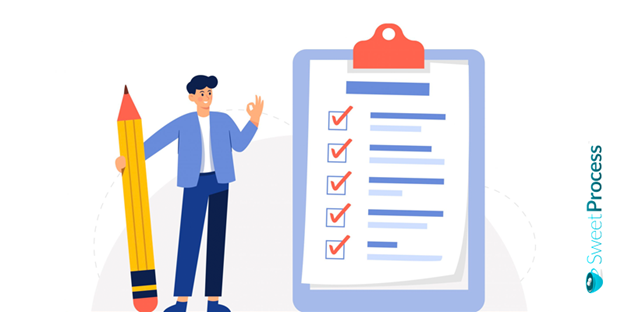
The organizational development process is a continuous series of steps heavily influenced by research and systems. Common OD implementation steps include those outlined in this chapter.
Identify Areas that Require Improvement
Before implementing changes in your organization, identify a need that aligns with your desired business goals.
If you don’t know your company’s needs, get feedback from employees and run surveys to identify problems or situations affecting your business processes. This data-driven approach will identify areas that need urgent improvement.
What do you want to change in your company? And why is the change so important? The answers to these questions will help you pinpoint areas of improvement.
Assess the Problem
Once you’ve zeroed in on areas that need improvement, investigate why the problem or situation exists in the first place.
Also, find out what is hampering improvement efforts in these areas and what solutions were previously used to mitigate the problem. If possible, make use of individual consultations, focus groups, and surveys in this step.
Craft a Plan of Action
After assessing the problem, create an action plan with clearly defined employee roles and well-allocated resources. Your plan of action should include specific support for individuals involved in the process—and ensure the desired goal stands out.
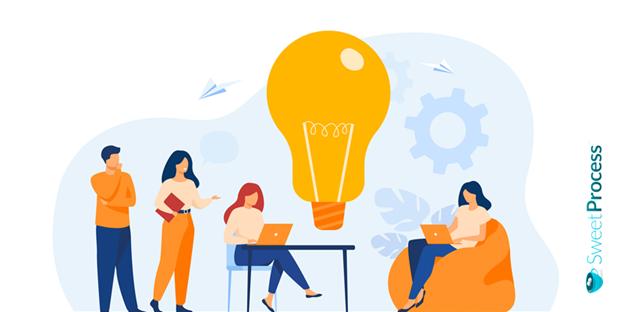
It’s during the creation of a plan of action, you should communicate organizational changes to your employees and make sure to get their feedback.
Create a Vision
Once you have a clear plan of action in place, leadership should now step in to motivate employees to share in the company’s broader vision.
In this step, top-level leaders become role models that help employees see the action plan’s goal and the desired outcome when it finally takes off.
Implement
Next, take the plan you created in the previous step and put it into action. To implement the plan (depending on the complex nature of the changes), train and mentor your employees to positively impact the problem at hand.
Evaluate Results
Having implemented the plan, find out if the plan improved the problem, eliminated the problem, or did nothing toward solving the problem. If you ignore analyzing the changes, your organization will never know whether the organizational development process was effective.
Get Feedback
Don’t forget to get feedback from all parties involved in the organizational development process. It’s important that you know if the problem was entirely eliminated or whether the change made some positive impact to help mitigate risks of injury for employees or improvement in a process.
Steps to Implementing an Organizational Development Strategy
The process of designing and implementing organizational development strategies is structured in the following five phases.
#1: Entry Phase
The entry phase is where contact between a leader/manager (“client”) and an organizational development professional (“consultant”) happens. During this initial phase, the client gives an account of their problem or situation.
Then a consultant will help create an action plan—involving a preliminary agreement on scope and mutual expectations—to resolve their problem.
#2: Diagnosis Phase (Assessment of the problem)
The diagnosis phase is a fact-finding mission where consultants and organizational stakeholders go out of their way to find relevant information about the problem. So, they collect crucial data about the problem, analyze, and then review it.
#3: Feedback Phase
Once the problem is diagnosed, it’s sent back to the client for feedback. The client will explore the information given in terms of understanding, clarity, and accuracy.
In the feedback phase, the client will also review agreements on resources required and scope of work (think time and money), and the client’s ownership of the data.
This phase aims to create a plan of action that outlines solutions to be made based on relevant information and analyzed data.
#4: Solution Phase
The goal of this phase is to find solutions that will correct the problem, close the gap, and enhance organizational performance.
Likely solutions include an organizational change management plan, evaluation plan, risk management plan, an implementation plan, a training curriculum, training plan, a role-and-responsibility matrix, or simply a communication plan.
#5: Evaluation Phase
In this phase, data is evaluated to determine if the initiative meets desired goals and whether it achieves defined success indicators. In the evaluation phase, an evaluation report is created with continuous improvement recommended.
Chapter 4: Examples of OD Interventions
Organizational development is laden with many complexities. It’s, in fact, a technical field with equally technical interventions. Here’s a list of OD interventions (thanks to Cummings and Worley).

OD interventions are categorized into four groups:
- Strategic change interventions
- Human resource management interventions
- Techno-structural interventions
- Human process interventions
Strategic Change Interventions
These organizational development techniques focus on the change processes that have the ability to shake a company’s core.
- Transformational change. A company that undergoes transformational change often changes its core functions. A case in point is Nintendo. The corporation initially began by creating card games, then transitioned to electronic toys before fully dominating the video game industry.
- Trans-organizational change. In this technique, a company undergoes activities such as strategic networking, making acquisitions, allying, and facilitating mergers. All these are changes that move beyond a single organization. Other interventions can be added, for example: designing appraisal systems, manpower planning, and integrating technology.
Human Resource Management (HRM) Interventions
HRM interventions are closely related to diversity, wellness, and performance management.
- Diversity interventions. This OD interventional strategy calls for increasing diversity in the workplace by incorporating employees of different cultures, disabilities, sexual orientations, races, gender, and ages.
- Wellness interventions. Wellness interventions provide a healthy work-life balance through employee assistance and stress management and address social factors.
- Performance management. Performance management interventions such as reward systems, performance appraisal, and goal setting are necessary to improve employee performance in an organization.
Techno-Structural Interventions
Techno-structural interventions are change techniques targeting technological and structural issues in the organization and comprise organizational design and employee involvement techniques.
These interventions are increasingly relevant (and important to implement) because markets and technologies are rapidly changing in today’s world.
- Work design. An organization needs work design OD interventions to achieve optimum production through employee satisfaction, efficiency of processes, and job enrichment.
- Total quality management (TQM). Through practicing total quality management, companies can benefit from long-term organizational success. A case in point is Toyota’s Production System. It increases employee involvement by continuously improving their workplace culture, customer satisfaction, processes, and products.
- Organizational design. Techno-structural interventions often involve organizational design, including downsizing and engineering. Such interventions restructure and prepare an organization around new business processes, and also closely evaluate current business processes.
Human Process Interventions
Human process interventions are closely related to organizational dynamics, groups, and interpersonal relations. According to Cummings and Worley, these OD interventions are among the earliest ones devised in OD and the most popular compared to the rest.
- Individual interventions. When conducting large-scale organizational changes such as structural changes, new software rollout, and new strategy implementation, human process interventions—targeting an individual for the sake of improving communication with others—come in handy. A good example is coaching an individual on behaviors that help them relate to others (or behaviors that are counterproductive).
- Group interventions. Group interventions focus on processes, structures, and content within a group. Process relates to the group’s internal processes. Structure is the method it uses to deal with external issues. Content is what the group works on. These interventions are crucial especially when part of the organization communicates new job responsibilities to employees, restructures a department, or changes entirely.
Here are examples of companies that used organization development interventions to develop innovative products and services:
After Satya Nadella took the helm of the company, Microsoft relied on OD interventions to reorganize organizational culture and renovate its cloud services (instead of focusing on standalone pieces of software). The strategic changes he implemented included an overhaul of interdepartmental relationships and the employee review process.
To make operations more efficient and responsive, Cisco used organizational development initiatives to implement organizational change and advanced its services for operational success.
Cisco IT Network and Data Center Services (NDCS) changed from using a traditional organizational model to Cisco’s lifecycle model, with substantial operations improvements across five different metrics.
Dell Corporation—through a series of organizational development interventions—changed from a PC maker to a successful technology conglomerate. Using the Lean Six Sigma model to implement changes, Dell expanded far beyond the PC market, and now has stakes in storage, servers, data protection, and networking.
Hyundai Motor relied on organizational development interventions to implement new marketing initiatives and leadership for the company, and launch the new IONIQ-dedicated battery electric vehicle (BEV) lineup brand.
The organizational changes were meant to optimize Hyundai’s structure and bolster efforts to transform the company into a Smart Mobility Solution Provider.
Using organizational development interventions, Toyota Motor Corporation reorganized its organizational structures while intending to transform from an automotive company into a mobility company.
The changes helped the company advance an electrification strategy that contributes to the reduction of carbon dioxide through the entire lifecycle of its vehicles.
Chapter 5: Challenges of Organizational Development
Organizational changes are necessary for the company’s future, but no matter how important change is you’re likely to face massive barriers and challenges (such as resistance to change), which is normal.
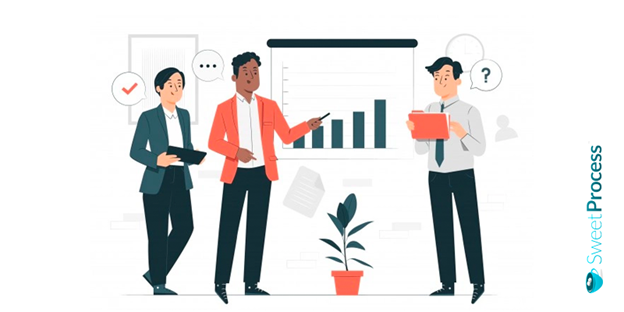
To minimize resistance to change, company leaders should roll out change slowly rather than making massive changes all at once—or, better yet, hire specialists to implement high-level changes in the organization.
When implementing change, make sure to communicate and educate employees. Doing so prepares them to accept change and have a clear understanding of what the change is all about and why it’s happening now.
Common challenges that come with OD processes include:
Goals Not Properly Aligned
Creating clear and open communication channels before starting a new process helps minimize conflicts in an organization.
For example, conflicts related to the allocation of resources or finances can arise when there are poor communication efforts between management branches or when company leaders disagree about particular set goals.
Fear of the Unknown
Some employees may be reluctant to adopt new changes, especially if past initiatives failed to take off after enacting changes. Others are probably afraid of failing and end up thinking the organization is fine as it is.
An employee expresses the fear of the unknown by complaining about new processes or subtly neglecting to be part of new initiatives.
Poor Leadership
Organizational change can become even more challenging, especially when key leaders exit the company and the remaining employees rush to fill their seats—lack of leadership skills notwithstanding.
Also, it’s difficult to make organizational changes when the current leaders possess poor team building and effective communication skills.
Challenges in Changing an Organization’s Values
Resistance to organizational change may also arise when some employees feel that the company’s mission doesn’t seem to align with the new processes.
Poor Understanding of the Changes Planned
When changes occur unexpectedly, employees can easily lose faith in a process. The best way to resolve this issue is to properly articulate the problem at hand, and then create a timetable for the changes—planning changes makes them even more predictable.
Burnout
Adapting to new ways of doing things the right way can be mentally draining and exhausting for employees, especially when there’s no support in place.
To ensure employees avoid burnout during changes, maintain a good work-life balance. Also, ask yourself (before making changes) if the change is necessary.
Lack of Accountability
When there’s a lack of proper accountability structures and systems across the organization, changes are often met with resistance.
Employees end up more confused as they don’t know who’s responsible for what. And leadership is also unaware of what’s happening in the lower levels of every department.
Difficulty Communicating an Organization’s Priorities
Organizational change is less likely to occur, especially when leadership doesn’t effectively communicate changes, expectations, priorities, and information on time within the rest of an organization.
Low Employee Morale
When enacting organizational changes, morale will take a big hit as your employees come to terms with the possibility of losing power and not having a say in how things are done.
So, low morale becomes a barrier to change and impedes a smooth transition to the changes, affecting the efficiency and productivity of the organization.
Failure to Get Everyone on Board
You’re likely to face challenges during organizational changes when there’s a lack of consensus. To ensure you don’t face dissent within the staff, make sure top-level management of the organization approves the decision to implement changes.
And all staff within the management level should also agree to the changes. That way, nobody will have any reservations about the changes.
Implementing New Technology
If employees don’t believe that adopting new technology will positively impact their job, they will question the changes, causing huge logistical issues. So, communicate ways on how technology will streamline their work processes to resolve this issue.
Poor Planning
Implementing change in an organization is likely to cause more problems than benefits when there’s a lack of proper planning. Make sure you understand exactly what changes will take place and how they’ll occur before implementing them.
Reading good books can improve leadership traits within your organization. Choose from this list of 17 best books on leadership and management.
Chapter 6: What to Know About an OD Practitioner
Anyone—whether an in-house consultant or outside professional—who develops an organizational change in a company is referred to as an OD practitioner.

Being trained as an OD practitioner is good, but what’s even better is if you possess excellent interpersonal and project management skills.
To become a successful OD practitioner in today’s modern world, you need to master a few skills, including (but not limited to):
Inner Strength
As an OD practitioner, you’ll meet resistance along the way. But remember, you’re an agent of change. So, be confident in your knowledge and skills to remain on the path of change for the betterment of your organization.
Communication Skills
It’s important to have a skillful approach to communication to help bypass strong resistance to perceived criticism from clients. Also, having great communication skills helps you explain your assessment and recommendations to people clearly.
People Skills
Change can’t happen without the trust and support of people affected by the change. Your work as an OD practitioner is to blend in with people (embracing change) and become a psychologist, sometimes a cheerleader, and even a manager.
Flexibility
A skilled OD specialist should be flexible enough to pause (in a step of a process) when results indicate change won’t necessarily yield the desired goal for now.
Process Skills
To envision, create, and implement processes and procedures, an OD practitioner should understand how the processes work. Having a good understanding of the processes will help support the goals and timeline of the planned change.
Organizational Knowledge
As an OD practitioner, you should know a company’s competitors and partners, its failures and successes, and past and present.
Knowing the entire organization helps you understand its vision, mission, and values while ensuring planned organizational development interventions will be ideal for the company’s culture.
Analytic Skills
Once you’ve gathered crucial data, an OD practitioner should analyze and review it, and then tell a story that highlights the biggest pain point and repercussions.
Diagnosis and Assessment Skills
If a specific area is identified for development, an OD practitioner comes in to identify the source of the problem and the metrics that need to be collected.
Chapter 7: Organizational Development Models

Once you identify the desired goal and areas to improve in your business, the next step is to discover the “how.” This is where organizational development models come in—they provide a clear framework for you.
The OD model clarifies communications for employees and creates a plan of action. Here are several organizational development models.
1. Kurt Lewin’s Three-Pronged Model
Lewin’s change management model consists of three steps:
- Unfreeze: The first step is to “unfreeze” or do away with old processes and procedures in preparation for change.
- Change: The second step introduces a new way of doing things and then implements it. During the transition, communicate more with employees to keep them motivated and focused.
- Re-freeze: The final step cements the “new normal” and encourages reflections on how to embrace and sustain the new processes.
2. Action Research Model
The action research model (also a creation of Kurt Lewin) consists of three phases:
- Research (problems and theorize solutions) phase: The research phase involves hiring a specialist, creating focus groups, and collecting data.
- Action phase: The action phase is where change happens. Like in Lewin’s three-step model, you can’t introduce a new way of doing things without clear communication.
- Input and results phase: The input phase is where you gather data to evaluate the strategy’s impact on the problem or situation. If your action plan was ineffective, go back to the first phase and analyze your problem even more.
3. Business Processing Reengineering (BPR) Model
The BPR model reimagines parts of an organization, which explains why it’s more radical than the other OD models. It consists of five phases:
- Map the current processes. Map out your current processes and procedures in preparation for analysis.
- Analyze the processes. Analyze procedures and processes (using the process map) to help you identify what’s working and what’s not.
- Identify solutions. Discover areas that need improvement.
- Design a process map for processes. This phase includes creating new organizational structures, delegating workload, and developing timetables.
- Implement changes to improve processes. In this phase, a new way of doing things is implemented and your employees receive training and support.
4. McKinsey 7-S Framework
Unlike other organizational development models, the McKinsey 7-S framework is organized into factors rather than steps.
As the name suggests, McKinsey’s 7-S framework consists of seven S’s including staff, skills, style, systems, structures, strategy, and shared values.
To come up with better solutions to a problem or situation, an organization should analyze all the seven S’s.
For the record, “shared values” is the main factor. The other factors are divided into two categories: soft and hard.
Hard S’s
- Strategy. The direction the company will take.
- Structure. The company’s overall organization, including responsibilities and job descriptions.
- Systems. The processes and procedures that currently guide the company.
Soft S’s
- Style. Describes top management’s leadership style.
- Skills. What the company (and its individuals) are capable of doing.
- Staff. Describes the company’s employees and their general capabilities.
Chapter 8: Organizational Development and Human Resource

Organizational development streamlines a company’s processes and improves its procedures (and capacity). And although OD complements human resource management, several differences abound.
Let’s look at the most obvious differences between OD and HR.
Many organizational development efforts are related to human resource management. For example, OD focuses on tools that cut across the depths of an organization. These tools form a wide range of technological solutions that help organizations manage their daily HR activities effectively.
On the other hand, the HR department selects, trains, engages and communicates the mission to employees—it simply centers on people-oriented initiatives. In short, HR is more operational while OD is more strategic and holistic.
How Organizational Development and HR Relate
Most human resource management functions are closely related to organizational development initiatives.
For example, to achieve effective organizational development, an organization requires HR-related policies such as talent management practices, appraisal, goal setting, and performance management.
Since OD is more holistic, it operates on all levels of an organization (that is, Individual, group, and organizational), and uses tools such as work design, individual and group interventions, and organizational design.
On the other hand, HR leans on the operational side of things (or people-oriented practices), while OD leans more on strategic themes.
Operational development functions are sometimes located within human resource functions. And other times, OD functions become part of internal consulting, corporate strategy, or a services department.
During the change management process, external strategy consultants often explore and utilize operational development techniques.
Both OD and HR have sunk their roots deep into the vision, values, and mission of the organization. It’s worth noting that most early people-oriented analytics practices came from the operational development department.
So, when HR professionals master OD techniques, they amass great benefits.
Chapter 9: How SweetProcess Can Help You With Organizational Development

When it comes to managing work activities, SweetProcess is the go-to organizational tool. The application gives you the systemization you need to scale and grow your business whether you manage a team or you’re hiring your first employee.
It allows you to track and visualize repetitive tasks, procedures, and business processes in one place so you can stay focused on growing your business.
SweetProcess also helps you create, share, and implement organizational policies. Having the right policies in place protects your business and maintains standards. It also helps you store your organization’s process assets for easy assess by all team members.
Here’s how SweetProcess helped three companies adopt changes.
How a Call Answering Service Organized Its Processes Using SweetProcess
MiPa, an award-winning personal assistant (PA) and call answering service, works with hundreds of businesses, answering their calls, managing their calendars, and dealing with tasks within their businesses.
Handling the communication needs of many businesses is never an easy task. Without proper organization, things can easily slip through the cracks.
Emma Mills, owner and founder at MiPa, and her team knew they needed to improve efficiency by tracking their business processes. However, they didn’t have the right organizational tool to streamline their processes.
“We dabbled a little with Dropbox in terms of just having some folders and putting in a Word document that had some basic steps in it.”
But these tools didn’t work for them. It was even more challenging to log in to the various processes for different companies. Then they discovered SweetProcess.
“SweetProcess [was the biggest game changer] as it helped us to scale up our service in a bespoke way. It’s enabled us to serve people in the way that they want.”
By creating effective business processes, MiPa improved its work activities for the better, and gives credit to SweetProcess for organizing its operations.
How SweetProcess Organized Processes and Procedures of an IT Company
For a business to achieve better results, all its processes and procedures should be organized in a central system accessible to everyone on its team. Mark O’Dell, operations director, and Chris Dunning, CEO, at TechQuarters, an IT company and leading supplier of Microsoft Solutions, knew that perhaps too well.
The team at TechQuarters struggled to systemize its processes. They’d teach a process to newly hired employees over and over again. Mark revealed it was one of their biggest pain points.
They needed an organizational tool to systematize their processes. And that’s how Mark—after taking it upon himself to find the best tool—landed on SweetProcess.
SweetProcess was flexible enough to allow them to bring several items (scattered all over the place) together for better operations and procedures.
“[SweetProcess] allowed us to bring different types of media and different bits and pieces into the system. […] it allowed us to nest inside it.”
Not only did SweetProcess raise the performance bar at the company, but it also helped their teams organize all processes and procedures, making work easier.
Australia-Based Brewing Company Used SweetProcess to Organize Its Operations
The management at Stone & Wood, a brewing company based in Australia, had a difficult time documenting its processes. The company struggled in the absence of an effective organizational system, which hampered all their quality assurance efforts.
The entire production also slowed down because employees were working with outdated procedures, leaving the team to start afresh when working on a new process.
To resolve this problem, which was a big waste of time and resources, Thomas Parker, quality assurance and sensory coordinator, tried several organizational systems until he found a solution in SweetProcess.
“I did look at several different options online. I can’t recall the specifics, but ultimately, it did boil down to a couple, and I liked SweetProcess from its ease of use and how flexible the sign-up was.”
SweetProcess was easy to use, which was a top criterion for Parker and his team. The application helped them bring new employees up to speed with how things are done in the organization—and also made information accessible to everyone.
By adopting SweetProcess, Stone & Wood was able to organize and strengthen its operations. You can also organize your company’s processes and procedures by signing up for a SweetProcess 14-day free trial right away. No credit card is required.
Conclusion
Organizations can positively impact meaningful change when they have a desired goal and a firm understanding of organizational development.
But embracing change is the biggest hurdle. That’s why every step in the process must be systemized with organizational tools for operations to run smoothly.
Some of the world’s renowned companies use organizational development to improve their business processes. A case in point is Starbucks, which recently unveiled eco-friendly policies aimed at reducing the use of paper cups and expanding recycling programs.
Amazon has also implemented organizational development by introducing a $700 million strategy to re-educate its workers on how to adapt to business procedures, working conditions, and new technologies.
Google, the search engine giant, embraced organizational development by cultivating a culture of ongoing learning where new employees sign up to learn new things and grow professionally by attending a series of workshops and training programs.
With the right organizational tool, your company can also manage all its work activities. SweetProcess software will help you implement organizational culture in your business by tracking and visualizing the proper progress of activities going forward.
Sign up for a SweetProcess 14-day free trial today (no credit card required), and download the Remarkable Organizational Development Checklist that covers steps to help your business improve on just about any problem or situation it’s facing.
